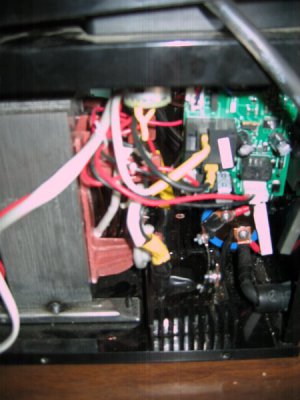- Joined
- Oct 31, 2016
- Messages
- 2,718
I just completed converting my HF 125 flux core to DCEN. It was not hard. Everything was a tight fit. I made all of the connections out of 3/16 soft copper tubing. I flattened the tubing and bent it to shape to make the connections from the rectifier to the capacitor. 3/16 tubing was the perfect fit on the wire so I made the lugs and crimped them onto the wire for the connections on the ground and the electrode to the capacitor. The picture isn't the best.

Did a couple of before and after test beads and really can't tell much difference. But then I am not much of a welder. I have a lot of welding to do on the MG Midget that I am resurrecting. I'll have a better idea after I am done with that.

Did a couple of before and after test beads and really can't tell much difference. But then I am not much of a welder. I have a lot of welding to do on the MG Midget that I am resurrecting. I'll have a better idea after I am done with that.
